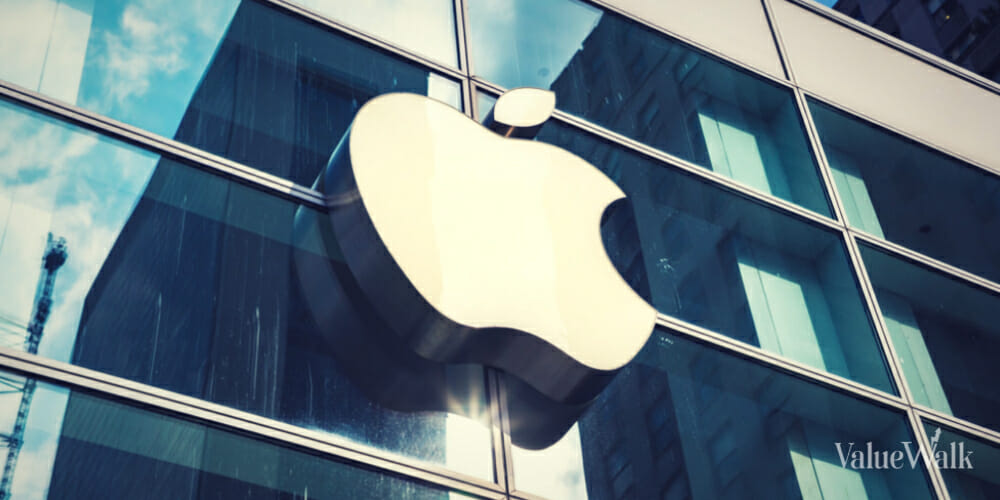Apple’s $1.53 EPS beat estimates and fueled a post-earnings surge in stock price.

Apple Inc. (NASDAQ:AAPL) exceeded analyst expectations at the end of its fiscal second quarter despite a slight decline in revenue. The tech giant posted revenue of $90.75 billion, up from $94 billion a year earlier but below expectations of $90.01 billion to $90.36 billion. This performance sent Apple shares up a surprising 6% in after-hours trading. The positive market response was primarily due to the announcement of a $110 billion share repurchase program, demonstrating strong confidence in the company’s continued financial strength and potential for future expansion.
This quarter’s performance and expectations
Apple Inc. had revenue of $90.75 billion for the fiscal second quarter, slightly better than analyst estimates of $90.01 billion to $90.36 billion but down 4% from the same period last year. Apple’s solid net income fell slightly from $24.16 billion to $23.64 billion, but beat expectations despite the recession, demonstrating the company’s strength in a difficult economic environment.
One noteworthy aspect of the quarter was the impressive expansion of Apple’s Services business, which saw revenue rise 14% to $23.9 billion. The rise helps offset some of the decline in hardware sales and shows how important services are growing in Apple’s revenue mix.
Product sales showed conflicting results. Apple’s iPhone sales fell to $45.96 billion, reflecting both the broader challenges facing the smartphone industry and the factors influencing consumer purchases around the world. Nonetheless, with Mac and iPad sales exceeding expectations, Apple was able to exceed sales expectations in other product categories. The strong performance of the Mac family highlights Apple’s strong market position and commitment to continuous innovation.
Declining product sales each year poses significant challenges for Apple to maintain growth momentum in its core products. This is especially noticeable when compared to the previous year’s higher sales due to purchasing delays and market recovery. In addition, broader economic issues such as inflation and supply chain disruptions have further complicated the situation for Apple’s hardware sector, particularly impacting iPhone sales.
This quarter’s results demonstrate varying performance in product sales and changing dynamics within Apple, with significant growth in services becoming increasingly important amid broader economic uncertainty affecting the consumer electronics industry.
Information, stock prices and recent changes
Although the company has not provided formal financial forecasts, Apple Inc. CEO Tim Cook and CFO Luca Maestri expect modest low-single-digit growth in the June quarter. These estimates demonstrate the company’s ability to remain flexible despite ongoing economic changes while still presenting a sound strategic plan.
Apple’s stock price saw a notable surge following the release of these financial statistics, rising 6% in after-hours trading. The market’s continued confidence in Apple’s financial stability and strategic plan is evidenced by the favorable trend in the company’s stock price throughout the year.
At the center of this confidence is Apple’s announcement of its largest stock buyback program ever, at $110 billion. This plan not only highlights Apple’s strong financial holdings, but also highlights Apple’s commitment to enhancing shareholder value, making Apple stock more attractive. These financial tactics are essential to maintain investor interest and ensure stock stability in unpredictable market conditions.
Geographically, Apple’s performance varies greatly from region to region, and its operations in Greater China are of particular interest due to its competitive and regulatory environment. Despite the decline in sales in this segment, the results were more favorable than many analysts expected, demonstrating the company’s solidity in key markets. These achievements alleviated concerns about the decline in market share of domestic competitors to some extent, contributing to the stabilization of Apple’s stock price on a global scale.
In summary, Apple’s strategic financial decisions and conservative yet positive earnings outlook are key factors in maintaining a favorable outlook among investors. The Company’s adeptness in managing economic uncertainty and its commitment to shareholder value through initiatives such as its share repurchase program reinforce the Company’s strong position in global markets.
conclusion
In summary, Apple’s success in the second quarter demonstrated its ability to withstand difficult market conditions. Investor confidence has been bolstered by strategic financial efforts, such as a $110 billion share buyback, that highlight the company’s strong balance sheet. Apple’s ability to adapt remains robust despite declining sales in certain regions, particularly in Greater China. The company’s cautiously optimistic future forecasts indicate a steady process of attracting and retaining investors with its long-term market potential.



